Crow’s Nest: Warwick Woods Restoration update
By Daniel Barringer, Preserve Manager.
I’m surprised to realize that I have written very little about the largest land stewardship project we’ve undertaken here in the last four years: the restoration of a former campground at Warwick Woods back to natural forest and is now part of Crow’s Nest Preserve. You can visit Warwick Woods today and walk the internal roads we are keeping as trails; access is best from the Horse-Shoe Trail west of Trythall Road (more on trails below).
The campground nestled in the woods was unable to find a buyer that would keep it a campground. Natural Lands was fortunate to find several sources of funding that made it possible for us to protect the woods.
Here is the first announcement I wrote about the acquisition in March 2020, a time when we all were reeling from the pandemic. We had just added 82 acres at the former campground, including a land swap with the adjacent Rock of Ages quarry; this allowed them to retain their access road and they traded to us the same number of acres of forest next to the campground and the rest of the preserve (as well as State Game Lands #43). And the staff at the quarry committed to taking down the defunct campground buildings, and in the almost four years since then they have gone above and beyond any of our expectations. They also connected us with a source for clean fill which allowed us to bury the broken up swimming pool to plant a meadow.
We’ve spent the last four years accomplishing projects which might not look like much—unless you know what is missing.
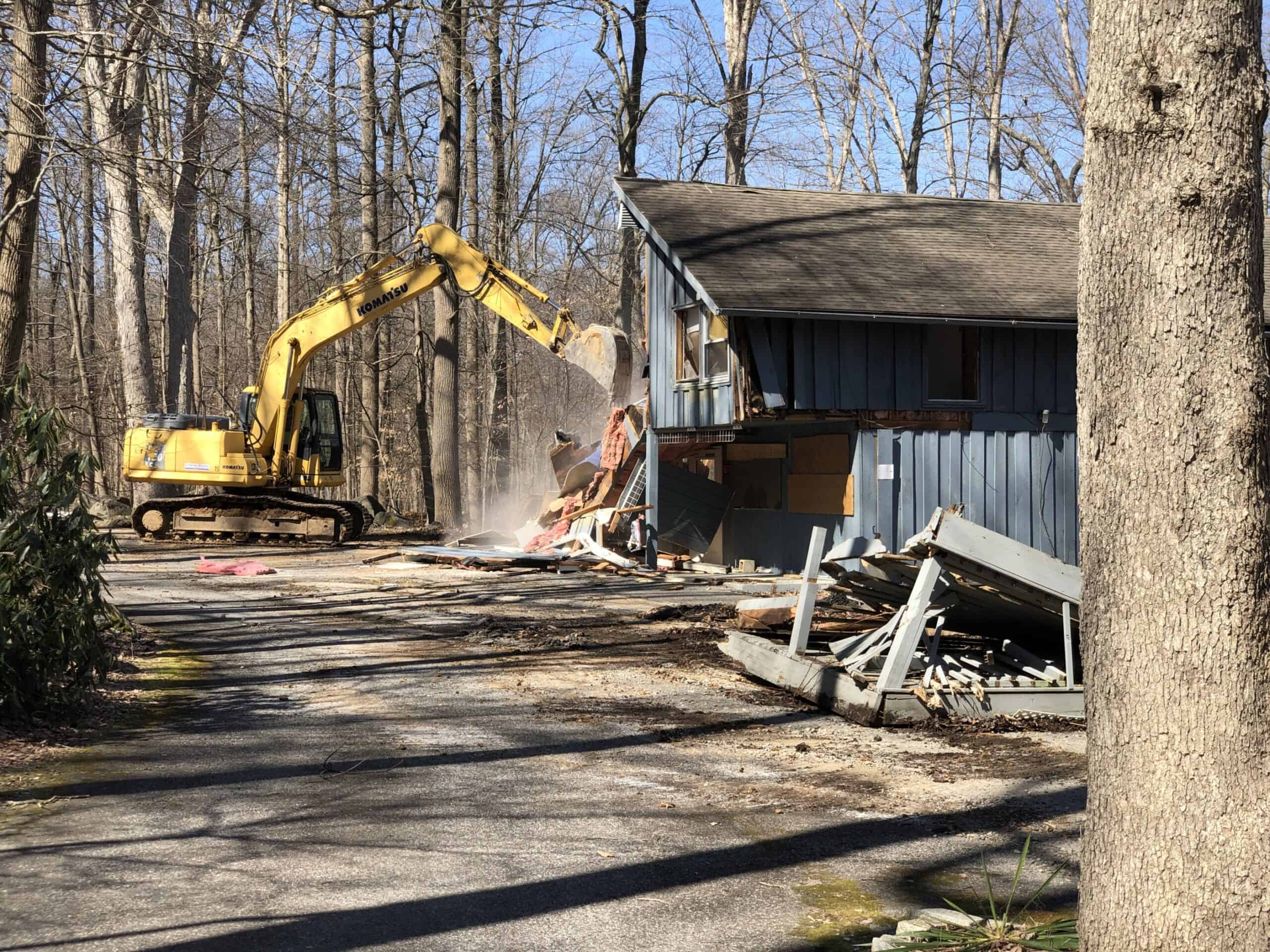
Photo: Daniel Barringer
I calculate that we removed more than 27,000 square feet of impervious surface in removing the buildings; this will slow runoff and allow more water to soak into the soil. (An auction at the campground before we acquired the property had removed anything of value from the stripped buildings.) We removed the electric meters and water spigots at about 100 campsites. Four wells were filled and certified closed, which prevents future contamination of the aquifer from direct contact with surface waters. Many underground septic tanks were drained, broken up and filled with soil (there was no onsite septic field—the tanks were pumped weekly during the camping season).
Overhead electric lines we removed and scrap metal recycled. All but two utility poles have been removed; one of those will be repurposed to hold a bat box. The rocks that made up 100 campfire rings were scattered by the teen volunteers who graduated from our Crow’s Nest Camp and Nature Club programs.
I’ve written a bit about the other volunteers who contributed so much to this effort. A track hoe demolished the bulk of the buildings and most debris was hauled away in dumpsters, but there were uncounted broken bits of trash that had to be picked up by hand—or many hands. Our Force of Nature volunteers, Natural Lands Stewardship staff, and Owen J. Roberts Junior ROTC students (twice) were among those who did much of the work.
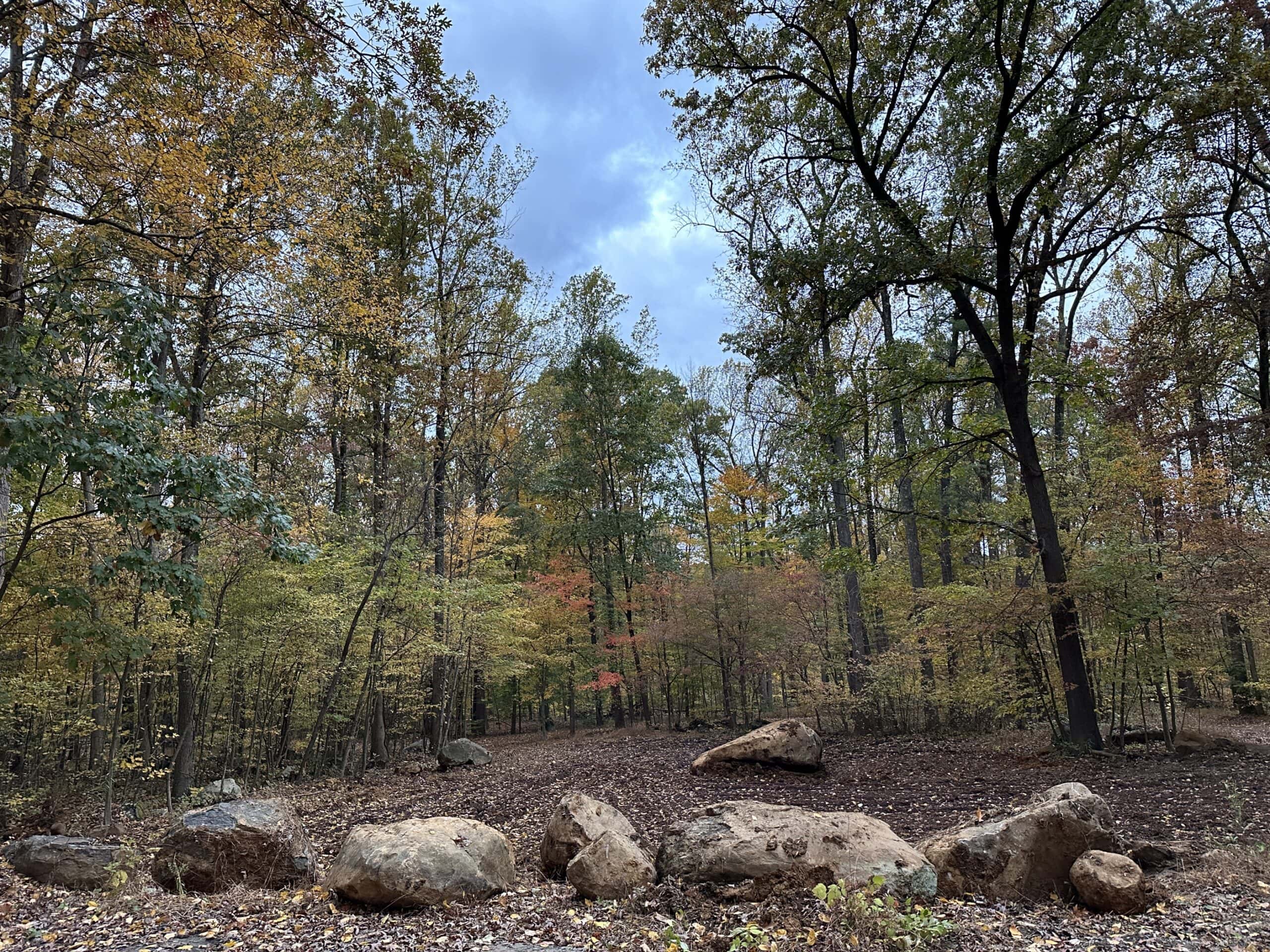
Photo: Daniel Barringer
The footprint of the general store (above) is being kept open as a small gravel parking area (the only other parking for events at Warwick Woods is along one side of the entrance driveway). A huge boulder surfaced, inconveniently, in the middle of the future parking area (and indeed there had been a boulder in the basement of the general store, around which the building had been built, a not-uncommon occurrence in this area). No problem—quarry staff moved it out of the way in under a minute:
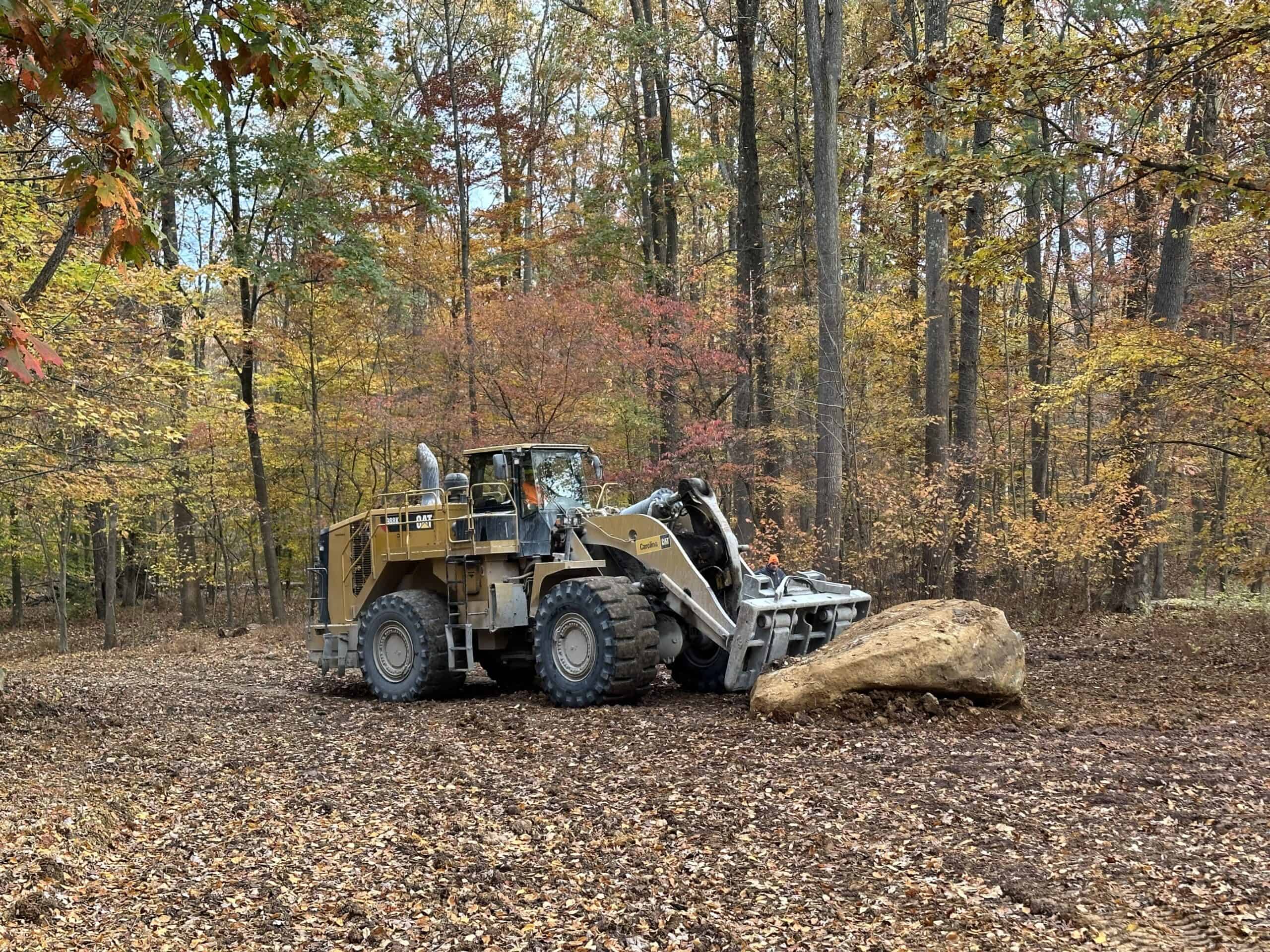
Photo: Daniel Barringer
The most dramatic change is the swimming pool area. The photo below is from the Warwick Woods Campground website and was probably taken in the 1970’s or ’80’s. I think the photographer climbed a tree adjacent to the pool to get this shot.

Historical photo from Warwick Woods Campground website
I was able to approximate the same view today using a drone; note for comparison the two evergreens in the background—an eastern red cedar next to a pine tree. Those landmarks, along with the surrounding woodland trees, are the only things that are the same. The game room and deck in the background are gone, the pool and playground, and shuffleboard, volleyball and basketball courts are all gone, as are the bath houses and all the other buildings. For a better comparison I will repeat this photo next summer after the meadow has started to grow and the trees have leafed out.
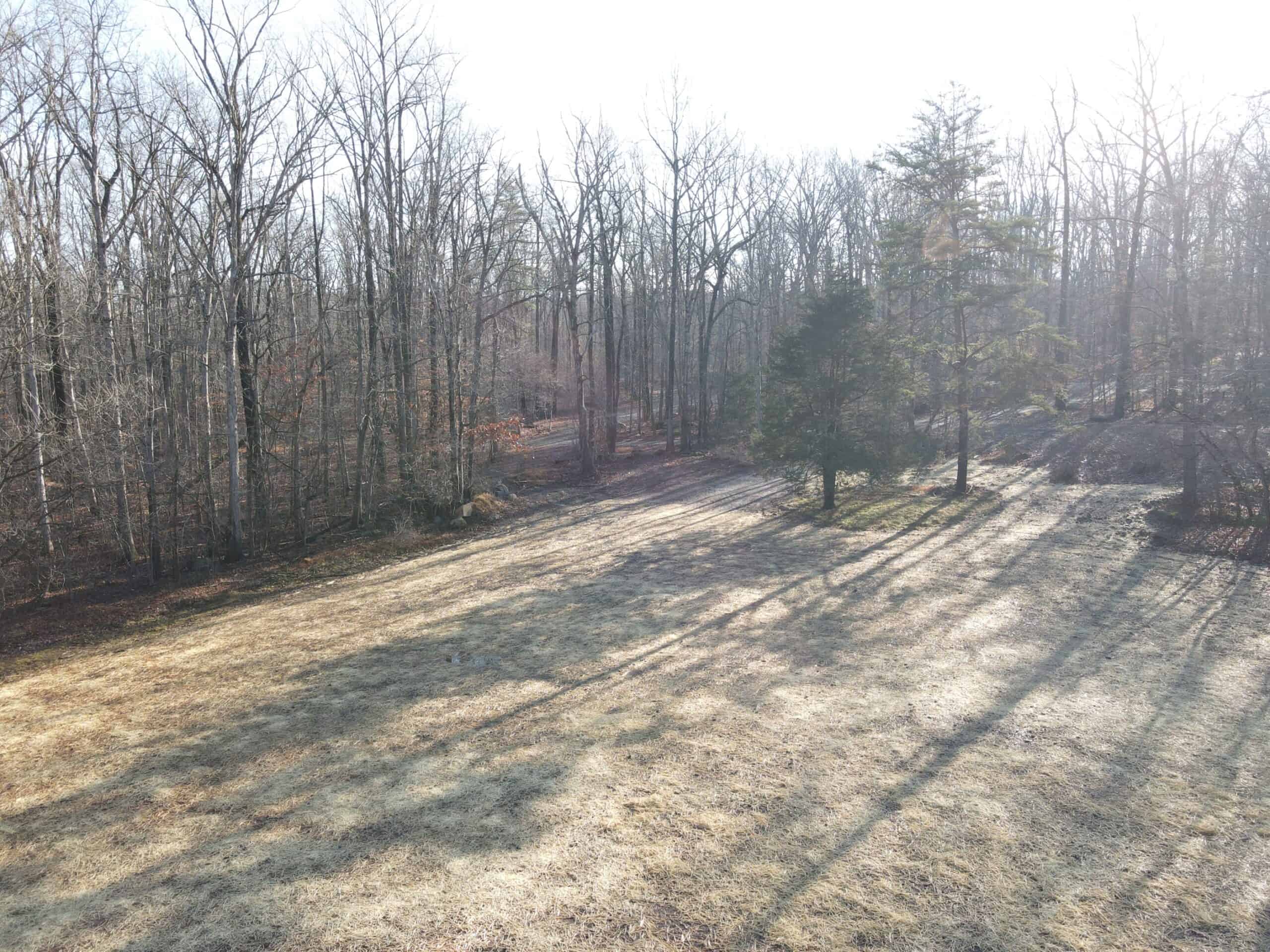
Photo: Daniel Barringer
What you can’t see from this photo is that the grade of the ground is dramatically higher; the broken-up rubble from the pool is buried under several feet of fill and the land slopes naturalistically down from the evergreen trees to taper off at the existing grade on the downhill side. It’s not the natural grade, as the area was cleared and leveled when the campground opened around 1968, but it is closer to what it was and the natural hydrology should be close to what it would have been before development. This opening in the woods we are making into a native meadow. There will be a trail mowed through this meadow from the upper left to the lower right in this view, offering one more loop among the trails available at Warwick Woods. Below: Devon towing a seeder planting the wildflower seed in early December 2023.
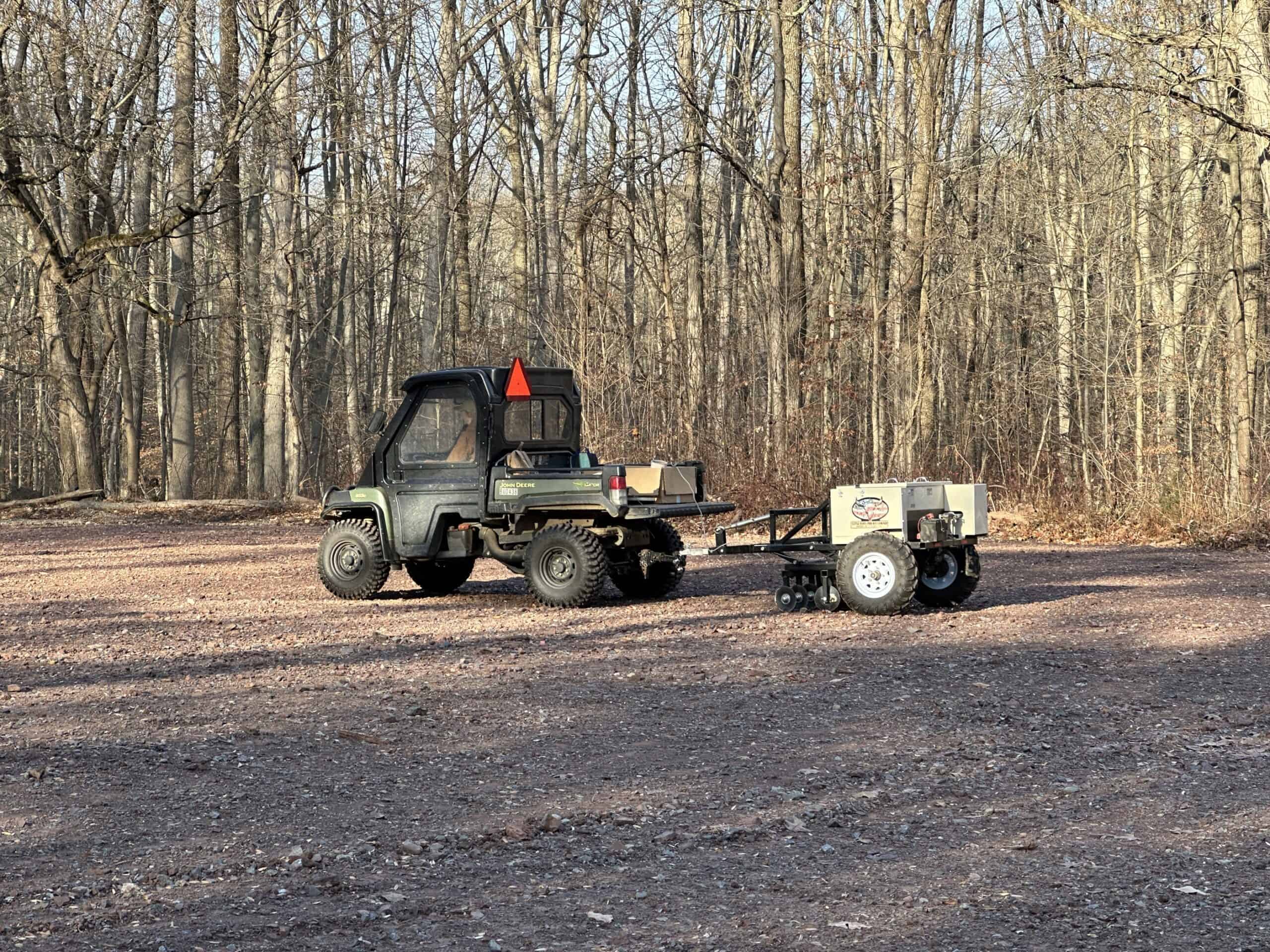
Photo: Daniel Barringer
Below is what the area looked like this fall as truckloads of dirt were being brought in, and before the basketball, volleyball, and shuffleboard courts were fully removed.
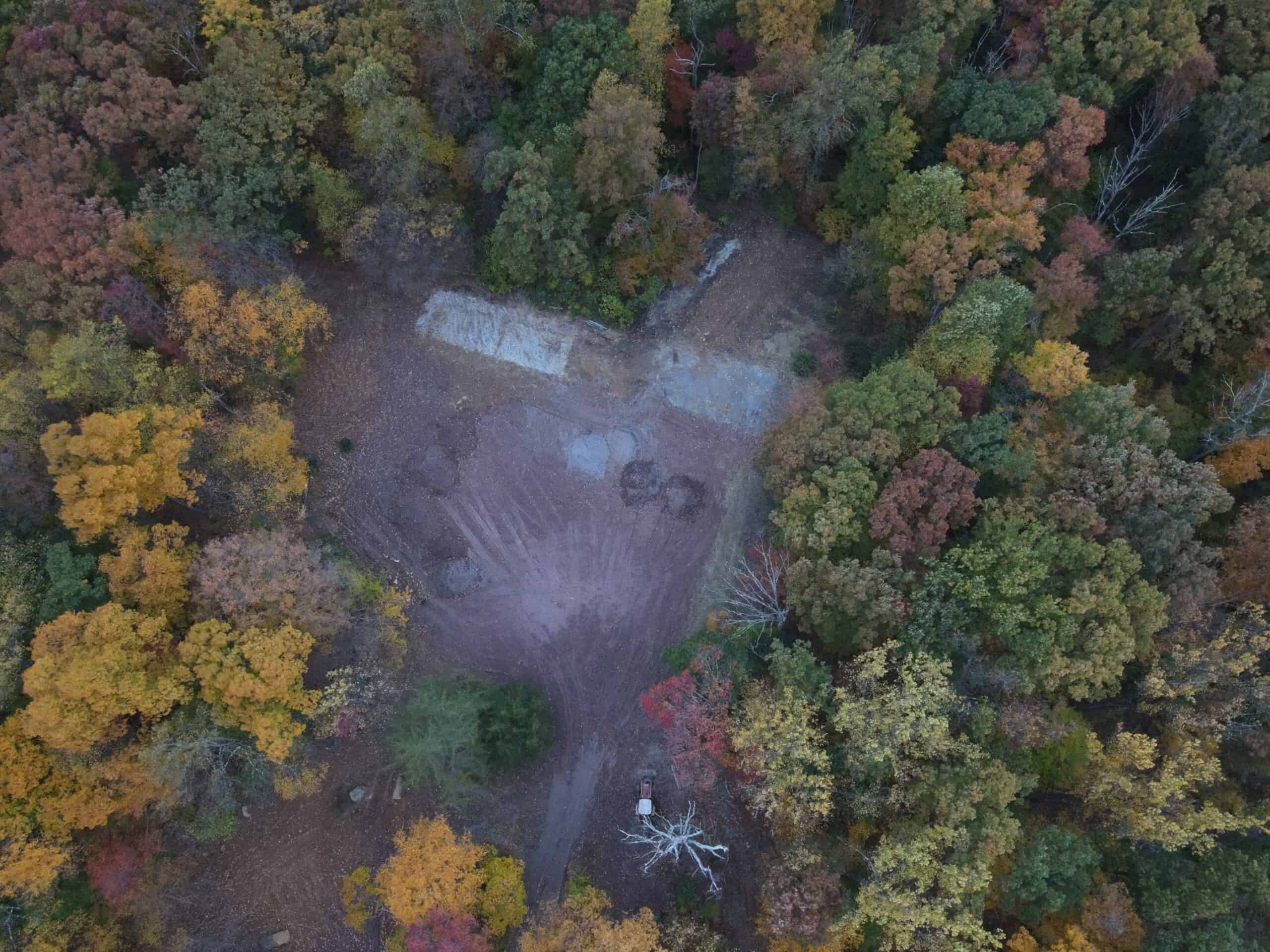
Photo: Daniel Barringer
Keep in mind that prior to being a campground this land had other uses some of which can still be discerned today: there are signs of rocks quarried in place—disturbances in the geology that can only be explained by rock having been “harvested” here and there (join us for our Geology Rocks! hikes and we may look at these sites). This land was also undoubtedly cleared of trees at one time, as the forest that is here today is a pretty young one—less than 100 years. And we know that human habitation occurred here for ten thousand years with impacts on the land about which we are still learning. Nearby Route 23 was, long before it became a state highway, a travel corridor for Indigenous people, the Lenape, who used the minerals here for arrowheads and tools.
The pond at Warwick Woods for now remains the same—though it isn’t a natural feature. But another huge part of our work at this site involves ongoing maintenance which would mainly be noticeable if we didn’t do it. We blow the leaves off of those internal gravel roads we are using as trails (the ones where we don’t have already disappeared as the forest reclaims them and all of the campsites, each of which once accommodated an RV). We have removed hazard trees from the campground’s frontage on Trythall Road. We have removed standing ash trees killed by Emerald Ash Borer from internal gathering spots like the parking area, and cleaned up others when they have fallen across trails.
There are some invasive plants found in the former campground. Burning bush (Euonymous alatus) was used in the landscaping and spread widely throughout the woods; mature ones I have removed though seedlings are likely to be present for years yet. Campers rented permanent sites for their RV’s and landscaped around them with the plants from home; even if home wasn’t far away the landscape plants tended to be nonnative and a few of those are invasive in natural habitats. We acquired our largest population at Crow’s Nest of the invasive spring ephemeral lesser celandine (Ficaria verna) with Warwick Woods; I have been doing my best over the last three years to remove it. Other plants known to be invasive, periwinkle (Vinca minor) and Japanese pachysandra (Pachysandra terminalis) are also present there—as is a plant called yellow archangel (Lamiastrum galeobdolon) that is grown for its variegated foliage but can colonize woodlands and has proven more difficult to remove than I expected. And we’ve removed the non-native genotype giant reed (Phragmites australis) found in and around the pond.
Force of Nature volunteers planted native shrubs and trees on the footprint of the removed maintenance barn.
The land of the former campground shows up on the newest version of the Crow’s Nest trail maps—but the gravel roads being reused as trails don’t yet show as there remains one major effort here: We will be planning and building a new trail to connect the Horse-Shoe Trail to our Deep Woods Trail on the other side of Mine Run. When completed there will be direct access on foot from the rest of the preserve to reach Warwick Woods.
In the meantime, come check out this newest part of the preserve, accessed from the Horse-Shoe Trail, limited parking on Trythall Road. I often meet people walking Warwick Woods who once camped here; though they are sad that the campground is gone they are thrilled that it is still woods and is open to everyone.
